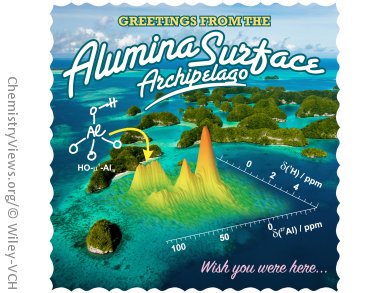Alumina is one of the most important catalyst materials in heterogeneous catalysis and is industrially produced on a scale of multimillions of tons per year. Its surface, from which its reactivity stems, comprises various types of Lewis/Brønsted acidic/basic sites; in particular the nature of the surface hydroxyl sites has been a point of debate for the past 50 years.
A French collaboration by Régis M. Gauvin and Laurent Delevoye, Université Lille Nord de France, Laurent Maron, Université de Toulouse, and Mostafa Taoufik, Université Lyon 1, have found that thanks to the combination of a high magnetic field and advanced (heteronuclear) correlation techniques, in conjunction with DFT calculations, solid-state NMR can provide unprecedented information on the topology of the surface hydroxyl groups of alumina.
Firstly, the researchers provided experimental proof for the assignment of the Al–OH signals in terms of terminal versus bridging character. Secondly, they determined the surface aluminium–proton correlation map. Thirdly, they combined data from the 1H–1H DQ MAS spectra combined with the preceding elements to lead to a proposition for the surface aluminium hydroxyls’ topology.
Through combination with the large amount of data gathered from IR spectroscopy, this heteronuclear NMR approach will open new avenues in the understanding of the surface chemistry of this fascinating material that occupies such a prominent position in catalytic applications.
- Heteronuclear NMR Spectroscopy as Surface-Selective Technique: A Unique Look at the Hydroxyl Groups of γ-Alumina,
M. Taoufik, K. C. Szeto, N. Merle, I. Del Rosal, L. Maron, J. Trébosc, G. Tricot, R. M. Gauvin, L. Delevoye,
Chem. Eur. J. 2014.
DOI: 10.1002/chem.201304883


